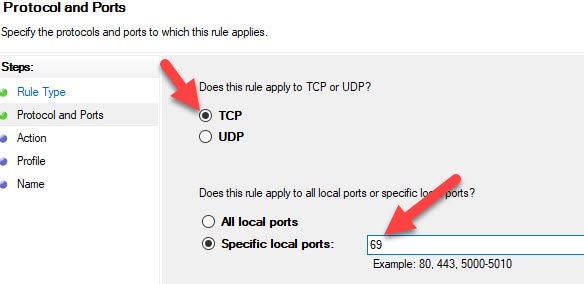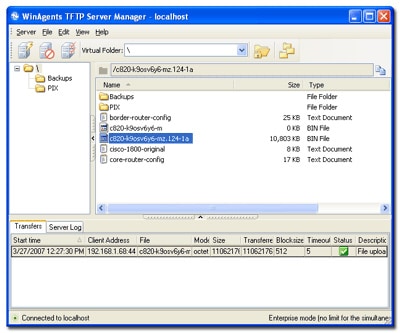
A client generally requests for reading requests if it wants only to read the file and generated a written request if he wants to write a particular file that exists on the server. Here, RRQ means Read Request, and WRQ stands for Write Request. Once the connection is established, the client generally requests RRQ or WRQ.Since Trivial File Transfer Protocol uses UDP for communicating files, hence it establishes a connection generally by using port 69.We will look at the mechanism of how does communication takes place between a client and a server. Now, let us understand how Trivial File Transfer Protocol works. It does not follow any authentication mechanism hence only those files could be communicated, which does not need to have any security mechanism. Since it is easier to implement hence, it could be widely used when we have a low-security mechanism to be followed. It could be used to communicate boot files when the server is on the client’s computer. Trivial File Transfer Protocol is beneficial when the client computer has very low memory storage devices or hard disk devices. Trivial File Transfer Protocol is used for communicating files between client and server within the local network.

Trivial File Transfer Protocol generally uses protocol 69 however, the port used for communication could be defined by used when Trivial File Transfer Protocol is being set up. Trivial File Transfer Protocol’s most important feature is that it uses a minimal amount of memory trivial File Transfer Protocol could be used to communicate boot files if computers do not have hard disks.

It is generally used for communicating files among machines set up in the local intranet only. Since Trivial File Transfer Protocol does not follow any authentication mechanism or any security mechanism, it could not be used over the internet to communicate files. Trivial File Transfer Protocol does not apply any security mechanism while filing communication. In general Trivial File Transfer Protocol does not follow any authentication before the communication of file. Although due to its simple design, it has limited features when it is compared to File Transfer Protocol. Trivial File Transfer Protocol has a very simple concept, and due to its simple concept, it has a straightforward design too.
#Tftp client not connecting to server software#
Web development, programming languages, Software testing & others Trivial File Transfer Protocol in Detail and Understanding it.
#Tftp client not connecting to server free#
This makes IMHO a lot of sense in another hypothetical scenario, after some specific network tests, a particular TFTP server could be programmed in such a way to accept (say) 8192 bytes blocksize from LAN IP's (or MAC's) known to be on a "fast branch" of the network, but only accept a max of (still say) 2048 bytes blocksize from LAN IP's (or MAC's) knowing to be belonging to a "slower branch" of the network, in order to get a valid compromise between speed and reliability.Start Your Free Software Development Course

Then it is again the client "responsibility" to either accept the equal or smaller than blocksize in the OACK or terminate the connection with error 8. So ultimately, it is the server that determines the actual blocksize to be used in the transfer. The *feeling* I expressed above is reinforced, the TFTP is used because the client side needs to be as simple as possible (but not simpler ), the key word here is "negotiate", anything different from the standard 512 bytes block size needs to be negotiated by both parties, but it seems clear enough how the "strong" party in the deal is the server side, that receives a request for blocksize, and then either gives an acknowledgment (OACK) that is equal to OR one that is smaller than the request from the client. Reading "between the lines" of the RFC2348 (which in itself is a late (1998) extension): So the idea makes sense to me, a server can serve *any* size of packet as requested by the client, that possibly has a given (hardcoded) blocksize only in order to be "simpler". Just a wild guess - mind you - but the generic idea of a server/client setup is (was) that of a very powerful server capable of doing *anything* and the client to be as simple (and as low-power) as possible.


 0 kommentar(er)
0 kommentar(er)
